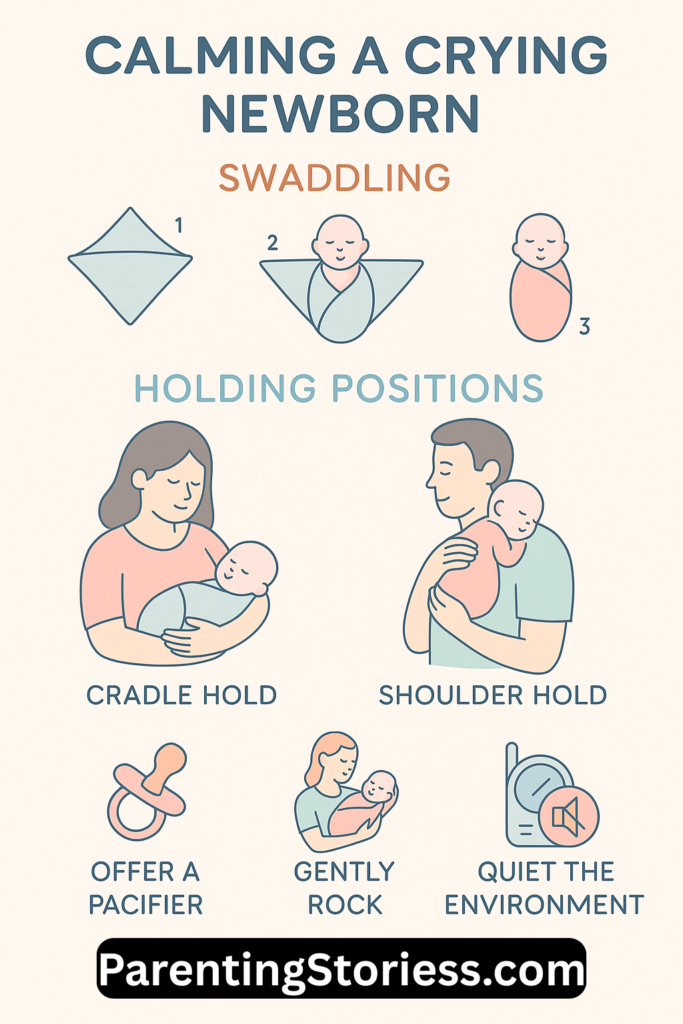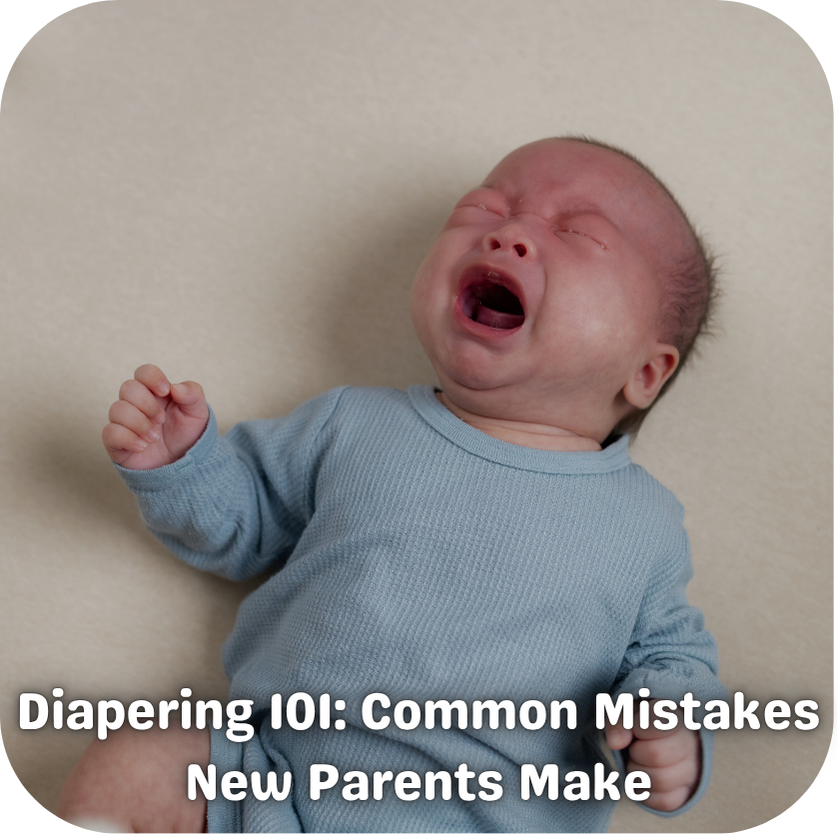Crying is a newborn’s primary way of communicating. It can indicate hunger, discomfort, overstimulation, or simply the need for closeness. For new parents and caregivers, deciphering and responding to your baby’s cries can be challenging—but with the right techniques, you can soothe both your baby’s distress and your own.
1. Check Basic Needs
Begin by ensuring your baby’s fundamental needs are met:
- Is your baby hungry?
- Does the diaper need changing?
- Is your baby too hot or too cold?
- Could they be tired or overstimulated?
Often, addressing one of these needs can quickly calm your baby.
2. Swaddle Safely
Swaddling can provide comfort by mimicking the secure feeling of the womb. Ensure that the swaddling technique allows the baby’s hips to move freely to prevent hip dysplasia. The International Hip Dysplasia Institute recommends positioning the hips and knees in slight flexion and abduction during swaddling. [Source]
3. Utilize Soothing Sounds
White noise, gentle lullabies, or recordings of a heartbeat can create a calming environment, reminiscent of the womb, and help distract a fussy baby.
4. Gentle Movement
Rocking your baby in your arms or using a baby swing can provide soothing motion. Ensure the movement is gentle and consistent to avoid overstimulation.
5. Offer a Pacifier
Sucking is naturally soothing for infants. Offering a clean pacifier can help calm your baby, even if they’re not hungry. The American Academy of Pediatrics notes that pacifier use during sleep is associated with a reduced risk of sudden infant death syndrome (SIDS). [Source]
6. Skin-to-Skin Contact
Holding your baby close, especially with skin-to-skin contact, can regulate their heartbeat and breathing, providing comfort and strengthening your bond.
7. Burp Your Baby
Trapped gas can cause discomfort. Hold your baby upright and gently pat their back after feedings to help release any air bubbles.
8. Minimize Overstimulation
Bright lights, loud noises, and excessive activity can overwhelm a newborn. Create a calm environment with dim lighting and minimal noise to help soothe your baby.
9. Warm Bath or Massage
A gentle bath or massage can relax your baby. Use soft, circular motions and speak softly to create a soothing experience.
10. Seek Support When Needed
If your baby continues to cry excessively despite your efforts, consult your pediatrician to rule out medical issues such as colic or reflux.

Important Reminder
Never shake your baby. If you feel overwhelmed, it’s okay to place your baby in a safe crib and take a few moments to compose yourself or seek support from a trusted individual.
When to Seek Medical Advice
While crying is a normal part of a newborn’s behavior, certain signs accompanying the crying may indicate a need for medical attention. Consult your pediatrician if your baby exhibits any of the following:
- Fever: Any rectal temperature of 100.4°F (38°C) or higher in infants under 3 months is considered serious and warrants immediate medical attention. [Source: Children’s Hospital of Philadelphia]
- Persistent crying: Crying that continues for more than 3 hours and is unresponsive to soothing techniques may be a sign of colic or another underlying issue. [Source: MedlinePlus]
- Feeding difficulties: Refusal to feed or poor feeding patterns, especially if accompanied by lethargy or irritability. [Source: Mayo Clinic]
- Changes in behavior: Excessive sleepiness, difficulty waking, or a significant decrease in activity levels. [Source: HealthyChildren.org]
- Breathing difficulties: Rapid breathing, grunting, flaring nostrils, or a bluish tint around the lips or face. [Source: Seattle Children’s Hospital]
- Signs of dehydration: Fewer wet diapers, dry mouth, or sunken soft spots on the head. [Source: Mayo Clinic]
- Rash with fever: A rash that doesn’t fade when pressed, especially if accompanied by a fever. [Source: Children’s Hospital Colorado]
Trust your instincts. If you’re concerned about your baby’s health or behavior, don’t hesitate to contact your pediatrician or seek medical care.
Important Reminder
Never shake your baby. If you feel overwhelmed, it’s okay to place your baby in a safe crib and take a few moments to compose yourself or seek support from a trusted individual.
Disclaimer:
This article is for informational purposes only and does not substitute professional medical advice. Always consult your pediatrician regarding concerns about your baby’s health or development.



